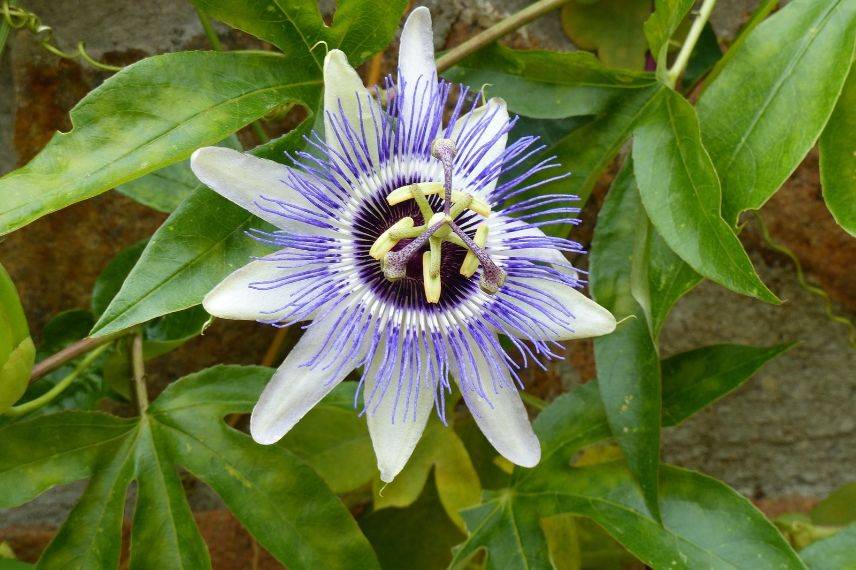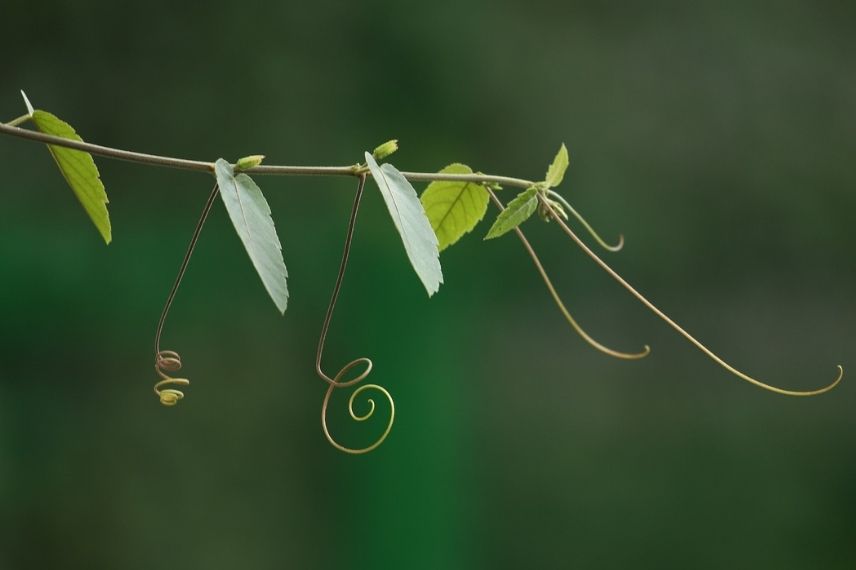Passionflower, also known as passion flower, is a magnificent climbing plant with delicate flowers, and is easy to propagate by cuttings. Follow our step-by-step guide to successfully take cuttings from your passionflower!

When to take passionflower cuttings?
Passionflower cuttings are best taken in July and August. The warmth during this period will help your passionflower cutting to develop roots.
Required materials
- Pruning shears
- A cloche
- Potting or cutting compost
- A rooting hormone
How to prepare a passionflower cutting?
- Identify this year's growth on your passionflower. Young shoots make better cuttings. Current year's growth can be recognised by its green or purple colour (depending on the species), whereas older growth will be brown with harder wood.
- Stems should only have leaves - avoid any with flowers so the cutting focuses on root development rather than flowering.
- Using clean, disinfected shears, cut the tip of a passionflower branch with 3 nodes. Nodes consist of a leaf and tendril - don't count the leaf at the very tip.

- Cut just below the third node as this will produce the new roots. Your cutting should be about 15cm long.
- Remove all leaves from the lower 2 nodes.
- You can remove half of the remaining leaves to reduce transpiration which could weaken the cutting.
- Remove all tendrils which the plant uses for climbing.
→ We recommend taking 5-6 passionflower cuttings for best results.

Passionflower propagation using a cloche
The cloche method (or "enclosed propagation") is the simplest way to root passionflower cuttings. The humid environment encourages successful rooting.
- Fill a pot with light compost, ideally potting or cutting compost. You can also use a mix of compost and sand.
- Water the compost to moisten it.
- Make a 3-5cm deep hole using a pencil or small stick.
- Optionally dip the stem base in rooting hormone or willow water before planting.
- Plant the stem and firm the compost around it.
- Cover with a transparent cloche, cut-off bottle, or mini greenhouse. Ensure leaves don't touch the cover to prevent rotting.

- Place in bright, indirect light. Passionflower cuttings need warmth and humidity but no direct sun.
- Monitor watering to keep the compost moist and ventilate every 3-4 days.
- After 4-8 weeks, roots will have formed. Transplant into a larger pot and protect from frost in a cold frame or conservatory until spring planting.
Further reading
- Our full range of Passionflowers
- Our potting compost
- Our cloches and growing tunnels
- Our mini greenhouses
- Rooting hormones:
- Willow water: a homemade rooting hormone
- Osiryl Solabiol rooting hormone for cuttings 40ml
































Comments